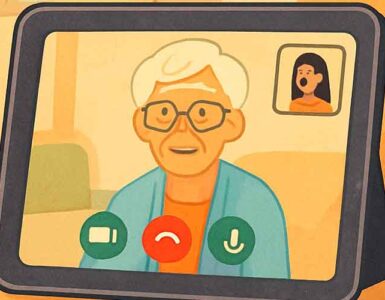If your hearing is normal, you may take for granted how much we rely on audible alerts and cues in our daily lives to assist us with routine tasks and to respond to emergencies. Assistive devices that help notify deaf and hard-of-hearing individuals of these alerts are essential in helping them lead independent lives. Here are some of the main categories of alerting technology for the deaf and hard-of-hearing with some representative products in each category.
Telephones
The degree of hearing loss is a key element in determining what telephone is best for the hearing impaired. In some cases, a phone with an amplified handset, louder ringer, and visual alerts may be sufficient. When hearing loss is more profound, the phones may require capabilities for text display and features such as TTY or TDD.
- Clarity BT914 Amplified Bluetooth Phone: Designed for the hard of hearing, the BT914 boosts audio output by up 40 decibels to ensure that calls can be heard, while the loud ringer offers 10 different ring tones. An adjustable tone control helps tailor the sound to best match the user. This phone works with landlines and also pairs with cellphones and smartphones via Bluetooth.
- Ultratec Uniphone 1140: The Uniphone 1140 is a TTY phone suitable for the completely deaf and features a built-in keyboard for easy use. The phone also supports VCO calls, so you can speak directly to another person and read their responses on the display.
Doorbells
Alerting the hearing impaired to the ring of a doorbell can be achieved by the addition of an extra-loud doorbell plus visual cues. In cases where the deaf or hearing-impaired person may be far from the doorbell, systems are available that provide a wireless link from the doorbell to separate receivers that will flash lights or use other methods to alert the hearing impaired person.
- Alarm/Strobe Doorbell Signaler: This basic doorbell and visual signaler wires directly into existing doorbells and mounts on the wall. In addition to a loud horn, a bright flashing strobe light is activated when the doorbell is rung. This is a simple and useful solution for smaller homes or apartments.
- Sonic Alert Doorbell Transmitter with Lamp Flash: In situations where the front door is some distance from where the hard-of-hearing person is located, a doorbell with a transmitter is a good solution. The transmitter for this device is wired to the doorbell and transmits a signal to a receiver. The receiver is plugged into a wall and then a lamp is connected. When the doorbell is rung, the lamp flashes. Extra receivers can be added to the system to cover multiple rooms.
Smoke and carbon monoxide detectors
The importance of having a smoke detector with alerting capabilities cannot be understated. Extra loud smoke detectors with flashing strobes built in may suffice, or a sound-monitoring device that detects when an alarm goes off and cues additional alerting mechanisms can be employed.
- First Alert Hearing Impaired Smoke Detector: This smoke alarm with an integrated LED strobe light offers an extra measure of protection for the hard-of-hearing. The detector is powered by AC and is easy to install in existing detector locations. A battery backup provides long-term protection if the power goes out. The strobe lights utilize separate flash patterns to distinguish between smoke and carbon monoxide warnings.
- SafeAwake Fire Alarm Aid with Bed Shaker: For an extra level of safety, this fire alarm aid is equipped with a bed shaker that vibrates when an alarm is detected as well as a loud audible alarm. The alarm operates by detecting the audible alert from T3-type alarms, so it’s important to ensure that it is compatible with your existing alarms.
Alarm Clocks
We all rely on alarm clocks to begin our day (for better or worse). Alarms for the hearing impaired may employ louder alarms and vibrations to signal the deaf person.
- “Shake-N-Wake” Vibrating Personal Alarm Clock: This wrist-based vibrating alarm clock has the added benefit of portability, so it can be worn around the house to serve double duty as a timer.
- Sonic Alert SB1000 Vibrating Alarm Clock with Bed Shaker: When a loud audible alarm isn’t enough, the Sonic Alert SB1000 adds a bed shaker for an extra level of alert.
Comprehensive solutions
We’ve examined stand-alone alerting technology solutions for the deaf or hearing impaired. If you’re starting from scratch to put together an alerting technology system there are systems on the market that will integrate many of the functions we’ve looked at.
- Sonic Alert HomeAware Starter Kit: This system covers many of the notifications necessary for the deaf and hard of hearing. The system comes with a wireless doorbell, bed shaker, and smoke alarm detector. All the devices link to a central base station with an LED notification screen that also provides notifications of incoming phone calls.






























Add comment